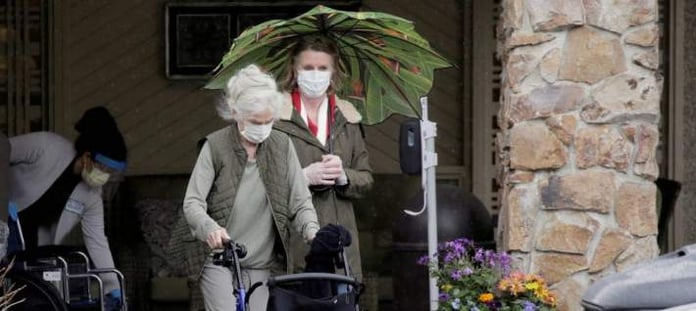
Mayor Giorgio Gori and Luca Lorini, chief physician of the intensive care unit of the Pope John XXIII clinic in Bergamo, agree: The first leg of the round of 16 of the Champions League between Atalanta Bergamo and the Spanish club FC Valencia on February 19 made a significant contribution to the explosive outbreak of the coronavirus epidemic in Lombardy. Gori speaks of a “biological bomb”. For the spread of a virus, says Loroni, it is “an insane acceleration effect when 40,000 people hug and kiss”.
National civil protection in Rome, which coordinates the fight against the epidemic across the country, does not want to confirm the thesis, but does not flatly reject it; Civil protection chief Angelo Borrelli was tempted to say that the game could have been a “potential detonator”. Because of the large number of spectators, it took place in the San Siro stadium in Milan. With the 4: 1 Atalanta laid the foundation stone for the later entry into the quarterfinals. The home stadium has been under construction since 2019 and would have been too small for the rush of spectators. It is barely 60 kilometers from Bergamo, where around 120,000 people live, to the metropolis of Milan. Most of the 44,000 spectators at the San Siro stadium should have come from Bergamo.
The game took place the day before the positive test of Italy’s “patient one” in the Codogno clinic southeast of Milan. On the evening of February 19, there was no indication that the virus had arrived in Italy, particularly in Lombardy. In Bergamo too, those who stayed at home in bars and restaurants celebrated the greatest success in the history of Atalanta.
Unusually many pneumonia in February
Most Italian virologists and epidemiologists now assume that the virus was present in the densely populated Po Valley much earlier than in mid-February – namely in mid-or even early January – and was able to spread undetected. This is indicated by a typical number of pneumonia diagnosed by family doctors in January and February in those areas that were to become breeding grounds for the epidemic weeks later. These diseases alone could have been Covid 19 pneumonia.
- Kirkland hotspot: “We thought about the flu”
At the end of January, a nurse from the Life Care Center in Kirkland, a suburb of Seattle in the US state of Washington, had called the emergency doctor. “She has breathing problems,” she described the symptoms of an 85-year-old resident of the nursing home. The next emergency call came a week later. Two days later, on February 10, home manager Tim Killian had warning signs posted in the lobby after a wave of respiratory diseases among the approximately 120 residents.










